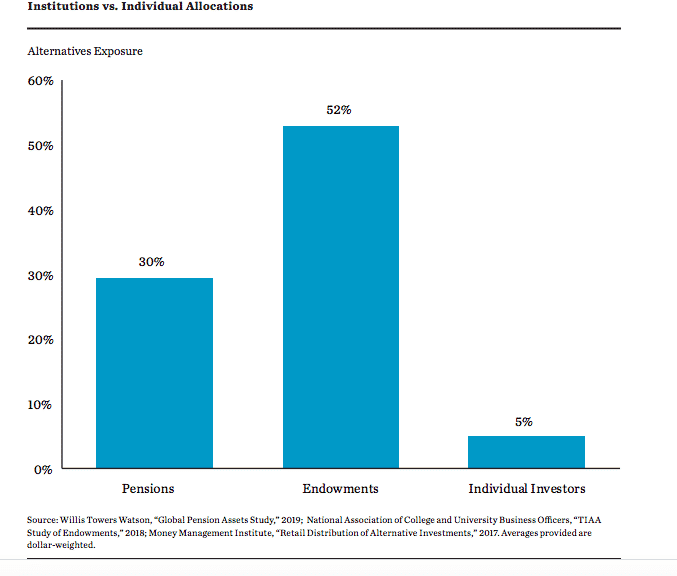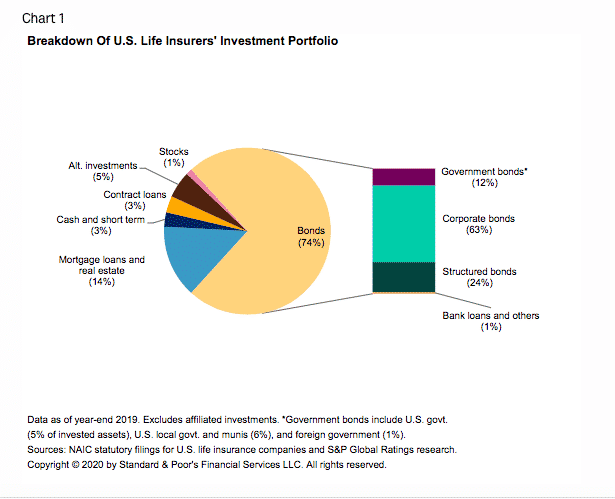In the financial investing world, asset allocation models are everywhere. There are income models, growth models, and balanced models. There are one-fund, two-fund, and three-fund models. Some people are aggressive with 100% of their portfolio in stocks, while others only invest in bonds. The combinations of what one can invest in are endless.
And no matter where you look, it seems like every financial advisor has an asset allocation model that they think is perfect for you. What many of these models miss is direct investment in real estate.
So it shouldn’t surprise you that most individual retail investors are under allocated in real estate. And we know that mounting research shows that portfolios made up of stocks and bonds have had lower returns and higher volatility than those that included real estate.
I’m going to show you the data, but first let’s just cover a couple of definitions.
Retail Investors
What is a retail investor? In short, you and I are retail investors. These are individual investors who purchase securities for themselves and their individual accounts.
The term, retail investor, is less about what you’re investing in and more about who you are, why you’re investing, and what volume of capital you’re investing with.
Institutional investors are professional investors. Investing is what they do for a living. Basically, it’s an umbrella term used to describe investing on a large-scale by companies that do professional portfolio and fund management.
Generally speaking, the legal entities that fall under the institutional investment umbrella are insurance companies, commercial banks, endowment funds, pension funds, mutual funds, and hedge funds.
As individual retail investors, it can be instructive to pay attention to what the institutional investors are doing.
Why is this important?
Institutional Investors
Think about it, institutional investors spend millions of dollars every year on their asset allocation models and due diligence. They have access to the very best data and research teams.
They want to preserve their capital and grow their wealth. The good news is that is what we all want.
So even if you don’t have the resources to do top level risk analysis and asset allocation modeling, you can still leverage their work product for your benefit. And when you do that, what becomes painfully obvious is that the average individual retail investor’s asset allocation model is vastly different than the average institutional investor.
Source: BlackRock
Alternative Investments
Institutional Investors incorporate far more alternative asset investments in their asset allocation models than individual investors. And what exactly are alternative investments?
Loosely speaking, alternative investments are any investment other than cash, bonds, or stocks. It could be precious metals, private equity, or venture capital just to name a few.
But as Harvard Business School notes, real estate is easily the largest alternative asset class and resident occupied real estate is the world’s biggest asset class. It so far outpaces stocks and bonds that many feel it shouldn’t be categorized as an alternative asset class anymore. But that’s a different story for another time.
Asset Allocation Models and Real Estate
Now that we know that the average individual investor falls woefully short on real estate in their portfolio, let’s contrast that with what the professional institutional investors are doing.
What do U.S. Life Insurance Companies Invest in?
U.S. Life Insurance Companies are some of the most conservative institutional investors on the planet. Their combined portfolios represent a whopping $4.5 trillion.
They want to grow their assets, but they have guaranteed death benefits that they have to pay out. So it’s important that they invest cautiously with capital preservation remaining top of mind. Given that fact, it should come as no surprise that their top holding is bonds.
However, they also invest in commercial real estate both on the debt and equity side. And, these investments represent their second largest holding.
Source: S&P Global
What Are Pension Funds Investing in?
Willis Towers Watson is a global risk management advisory company that serves the pension fund space. Every year, they do their Global Pension Assets Study.
In it, they look at the 22 largest pension markets. 92% of all the assets are in the seven largest markets – United States, United Kingdom, Canada, Japan, Australia, Switzerland, and the Netherlands.
At the time of this writing, their 2020 results have not been published, but the 2019 survey found:
“The research also shows the shift to alternative assets continues apace and marks two decades of considerable change in pension fund asset allocation globally. In 1999, just 6% of P7 (seven largest countries with pension holdings) fund assets were allocated to private markets and other alternatives, compared to nearly a quarter of assets (23%) in 2019. This shift comes largely at the expense of equities (stocks) and bonds, down 16% and 1%, respectively, in the period. The average P7 asset allocation is now equities 45%, bonds 29%, alternatives 23% and cash 3%.”
Pension Funds and Alternative Investments
This migration toward alternatives in general and real estate specifically is the result of the research we talked about in a previous article, “Why your balanced portfolio should include real estate.”
It’s clear that real estate has been a stabilizing asset class with the duel effects of enhanced returns and lower volatility. So it’s not surprising that over the past 20-years U.S. and global pension funds have gravitated toward real estate.
Certainly it’s clear that there is a range of asset allocation models in the pension space, but collectively they’ve developed a pattern in which real estate is a material piece of the puzzle.
Take for example the California State Teachers’ Retirement System (CalSTRYS). It is the second largest U.S. public pension fund. And as of December 31, 2020, real estate was the second largest allocation in their portfolio behind stocks.
U.S. Educational Endowments Asset Allocation Models
The National Association of College and University Business Officers (NACUBO) partners with TIAA to produce an annual report on the status of U.S. educational endowments. Over 700 institutional endowments are evaluated.
Time and time again, their research shows that real estate is an integral component of most endowments asset allocation models. While endowments invest in stocks (equities) far more aggressively than insurance companies do, they also hold significant investments in real assets as well.
Let’s zero in on three of the largest endowments in the country as of the fourth quarter of 2020.
- Harvard University – $40.9 billion
- Yale University – $30.31 billion
- Stanford University – $28.9 billion
Their June 2020 reporting shows that all three Universities hold the majority of their endowment in alternative investments. This includes billions of dollars worth of real estate.
In fact, both Stanford and Yale allocate more money into real estate than they do into domestic equities and bonds. Real estate was the fourth highest allocation for Harvard.
Endowments have long-term investment strategies that allow them to invest heavily in riskier investments like stocks, hedge funds, and venture capital. To counter balance that, many also embrace higher allocations in real estate over bonds for enhanced returns, portfolio diversification, and overall stability.
Asset Allocations Models and Individual Investors
Real estate, stocks, and bonds are the big three of investments that all investors should consider when looking at asset allocation models to create their portfolio. Professional investors with billions of dollars under their control know the value of having real estate in their portfolio.
Whether you look at endowments, pension funds, or insurance company holdings, you’ll find healthy allocations in real estate.
They’ve done their research and they know the benefits of having real estate in their portfolios. Unfortunately, individual investors are largely missing out on the benefits that can be derived from direct fractional ownership of real estate.
Ultimately everyone’s financial situation is different and there is no one single asset allocation model that is right for everyone. However, real estate has such a proven track record of performance, that everyone should consider whether or not real estate is right for them.
What’s your asset allocation model? Do you own real estate in your portfolio? Contact us today to learn more.
Author: Dennis Bethel 37parallel.com

